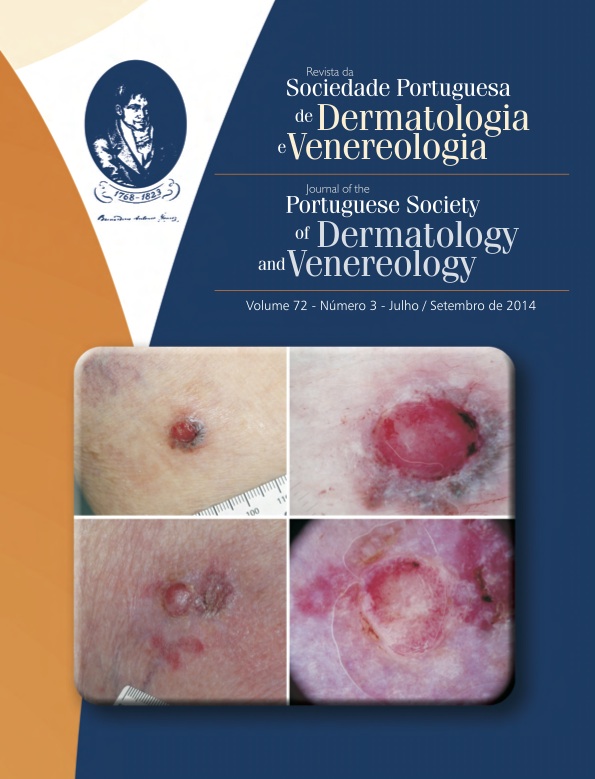PYODERMA GANGRENOSUM ASSOCIATED WITH HIDRADENITIS SUPURATIVA – A RARE BUT WELL ESTABLISHED ASSOCIATION
Abstract
Pyoderma gangrenosum (PG) and hidradenitis suppurativa (HS) are inflammatory diseases of unknown aetiology, which association is rare but well established. We describe the case of a 27-year-old female patient, with axillary and inguinal hidradenitis supurativa lesions since four years ago who developed a pyoderma gangrenosum lesion in her right leg. Treatment was instituted with systemic corticosteroids in inpatient setting. Afterwards, clindamycin and rifampicin were chosen followed by low dose isotretinoin with good response. The association of HS and PG can possibly have a common aetiology related to neutrophilic activity dysfunction. The description autossomic dominant syndrome PAPA (PG, acne and pyogenic arthritis) as well as PASH (PG, acne and HS), dermatos included in the spectrum of autoinflammatory diseases, promise a better comprehension of aetiopathogenesis of this association with possible diagnostic and therapeutic improvements.
Downloads
All articles in this journal are Open Access under the Creative Commons Attribution-NonCommercial 4.0 International License (CC BY-NC 4.0).








